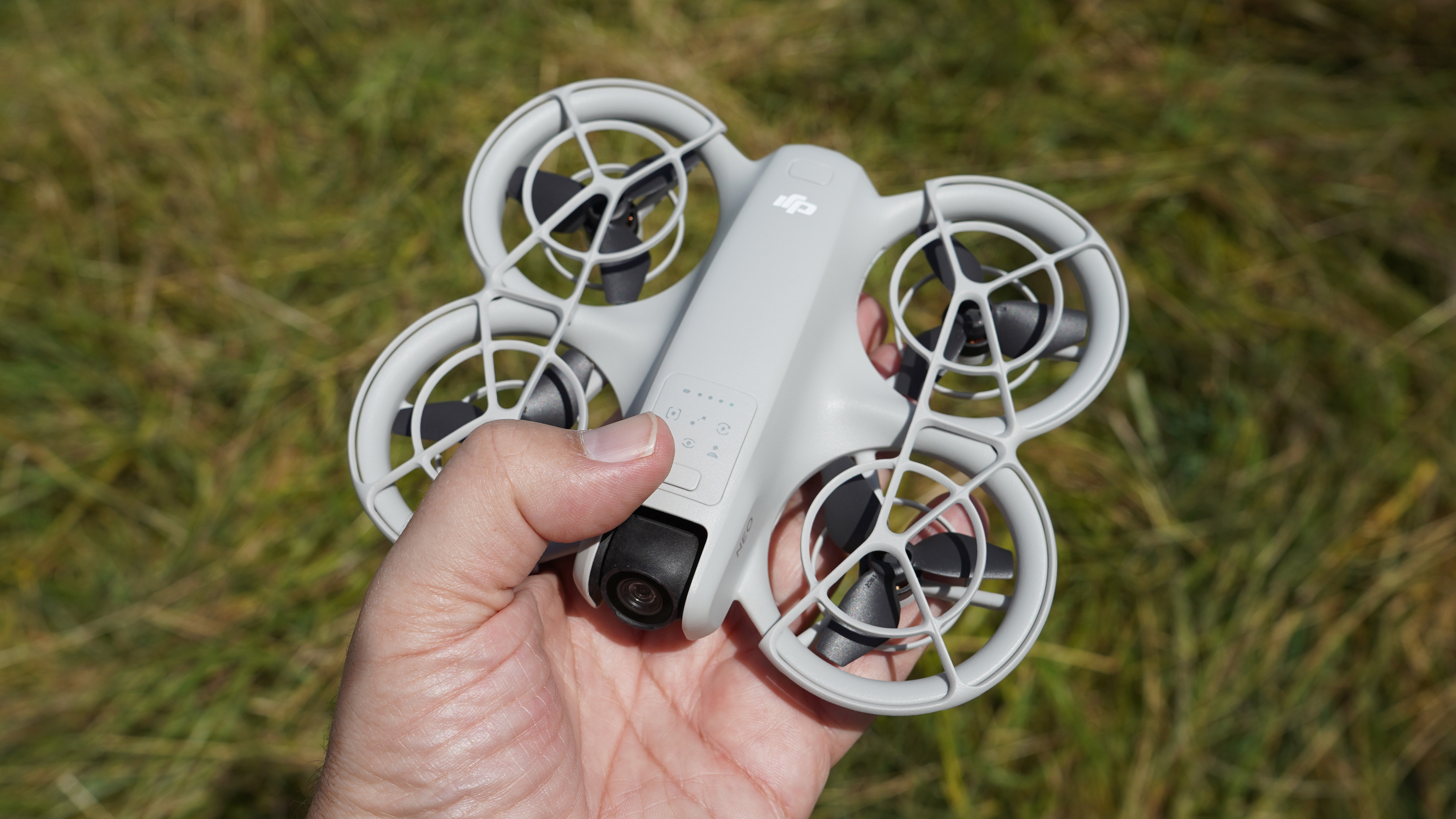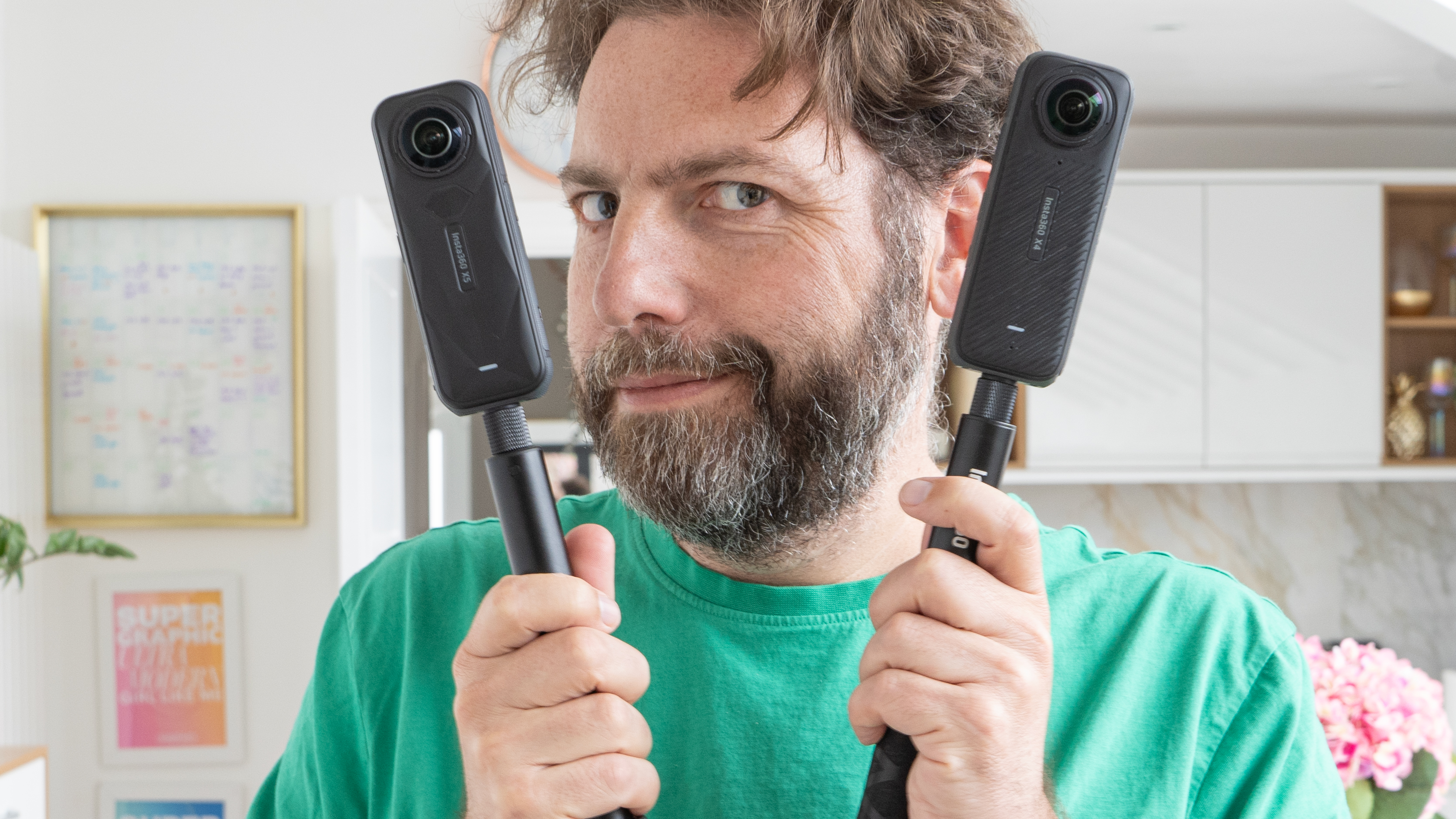DJI Neo marks a generational change for world's leading drone company
The DJI Neo has just been launched, and it marks a MASSIVE change in the company's consumer drones

DJI has just announced the DJI Neo, which might not be much of a surprise to those closely following the rumors but still marks a significant change in style for DJI, the world leader in consumer drones.
I've had access to an early model, and have already completed my first full review of the DJI Neo (though some features aren't quite there).
For many product generations, the company has focused on delivering compact drones which folded up small and – after regulators set a 250g weight limit for unregulated consumer drones – have delivered drones at 249g. Those include some of the best beginner drones and the best camera drones without qualification. Sure, there have been some specialist FPV drones, but these have seemed like outliers.
The new Neo, however, comes in significantly under the weight limit at an impressively low 135g – while still boasting a 4K camera and a 1-axis gimbal for image stabilization (the other axes are handled by electronic stabilization, as on the Avata 2 FPV drone).
With 22GB internal storage, Neo can save up to 40 minutes of 4K/30fps video or 55 minutes of 1080p/60fps video, and it can be transferred to the phone via wi-fi and app, or via the USB-C port that also charges the drone's swappable battery.

What really surprises me about the DJI Neo, however, is the flexibility of the drone. Not physically – it can't be folded like so many DJI drones – but in terms of control. Long have DJI insisted on a physical remote control, but this drone can be launched from the hand and either automatically follow you (simply using AI and the built-in camera) or use one of several remote options.
Specifically, these are to be controlled using a phone app, be controlled with a 'traditional' drone controller, or be piloted FPV style using DJI's wireless joystick-style FPV wand.
Get the Digital Camera World Newsletter
The best camera deals, reviews, product advice, and unmissable photography news, direct to your inbox!
The former tracking technique clearly owes a lot to last year's HoverAir X1 drone, a device that might yet threaten DJI's apparent monopoly on consumer drones, but the implementation of DJI's O4 transmission standard and the FPV support adds flexibility to the Neo, which will make it very appealing.
Sound can also be recorded via the DJI Fly app, and the drone can even be paired with the DJI Mic 2 via Bluetooth to add sound to videos – vlogging has been considered by DJI.
That is A LOT of options by any standards, and all the more so for a drone that can be bought for just $199 / £169 / AU$299 (drone with one battery) and is available to try from tomorrow at the IFA trade show in Germany.
The drone will also be sold in bundles; the 'DJI Neo Combo' in the USA, with 3 batteries, for $289, and the Fly More Combo in the UK, EU & AUS with 3 batteries and a RC-N3 remote control for £299 / AU$539.
• See the DJI Neo on the DJI Store

With over 20 years of expertise as a tech journalist, Adam brings a wealth of knowledge across a vast number of product categories, including timelapse cameras, home security cameras, NVR cameras, photography books, webcams, 3D printers and 3D scanners, borescopes, radar detectors… and, above all, drones.
Adam is our resident expert on all aspects of camera drones and drone photography, from buying guides on the best choices for aerial photographers of all ability levels to the latest rules and regulations on piloting drones.
He is the author of a number of books including The Complete Guide to Drones, The Smart Smart Home Handbook, 101 Tips for DSLR Video and The Drone Pilot's Handbook.
